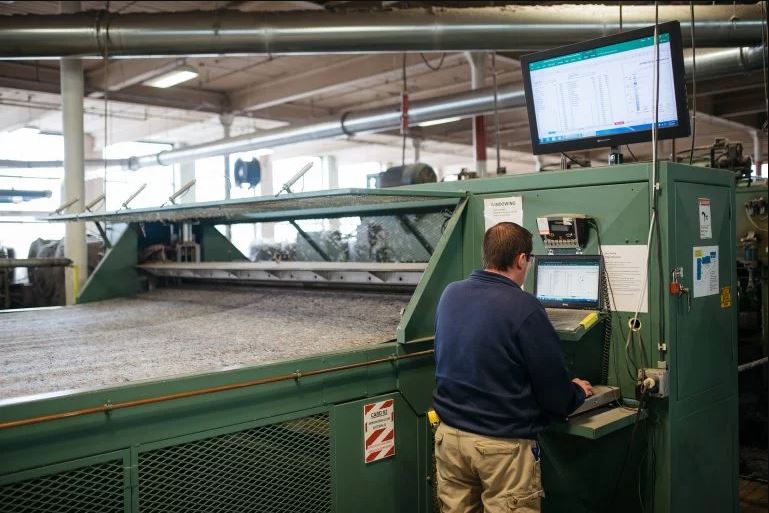The Story of the World’s Most Versatile Manufacturer
As manufacturers, we cannot wish for a better spokesperson than Santa Claus. He has a strong brand, is well-liked throughout the world, and brings efficiency to a whole new level.

Imagine a manufacturer that produces top-notch electronic devices, toys, clothes, all kinds of food and drink, books, board games, jewelry, sports equipment, musical instruments, home appliances, even cars, all at the same facility.
Sounds crazy, right? But there is one manufacturer that manages to do all that with the help of a highly dedicated shop floor workforce, an astoundingly efficient production process, and a logistics dream-team that allows them to distribute their finished goods 100% OTIF.
This is the story of the world’s most versatile manufacturer, Santa Claus.
The Story of Saint Nicholas
Santa Claus was born as Nicholas of Myra, far away from the Arctic Circle, in a Roman city in what is now Turkey. Back then, he was neither plump nor jolly, but a rather religious and hollow-cheeked man. One thing that he did have in common with today’s Santa Claus, however, was his love of giving gifts.
Legend says that he gave away all of his possessions and journeyed the countryside, helping those less fortunate, the poor, and the sick.
One of the more well-known St. Nick stories is about the time when he learned that three sisters were about to be sold into slavery because their father could not feed them. Nicholas then proceeded to throw a sack of gold coins through their window for three consecutive nights, giving the family the dowry they needed to marry the three sisters to good men.
The Development of Santa Claus
St. Nicholas became very well-loved in Europe, with his name day, December 6, gaining popularity as a day for giving gifts, especially so in Holland where they called him Sinter Klaas, a shortened Dutch form of Saint Nicholas.
He also became the patron saint of many manufacturers such as brewers, bakers, clothes and shoemakers, perfumers, etc.
When the veneration of saints diminished with the Protestant Reformation, St. Nicholas retained his popularity, but in order to divert attention from saints to Jesus Christ, Martin Luther started the tradition of giving gifts to his children on Christmas Eve. The two approaches merged with time and so today we have St. Nick bringing us presents during Christmas.
In the late 18th century, along with Dutch immigrants, Sinter Klaas made his way to New York, where his name transformed into Santa Claus. In parallel, the English had their own character that brought children presents during Christmas – Father Christmas, a jolly man that brought peace and joy. And in the colonies of North America, British and Dutch people mingled, merging again two traditions and inadvertently creating the modern global tradition of Santa Claus.
Today, the majority of the world knows and loves Santa Claus, each nation through their own special perspective, adding a workshop, shop floor elves, and a reindeer fleet into the melting pot.
Where is Santa’s Workshop?
Many argue about the location of Santa’s Workshop, with Finland claiming that Santa lives in Lapland, Canadians arguing that he is from Northern Canada (and that the postal code of Santa’s Village is H0H 0H0), Norwegians saying that he lives in Drøbak, and Danes that his residence is in Greenland.
Every other country seems to claim to be the place where Santa Claus resides. But as the man himself is not so keen on the laws of worldly physics, they can all be correct.
Wherever kids send letters with their Christmas wishes, they can be sure that Santa will receive them. His CRM system is simply nothing short of magic.
Why is Santa Claus Important?
Santa Claus (and Christmas, for that matter) has long evolved past his original Christian connotations. In the modern world, members of all faiths have incorporated aspects of Christmas into their traditions.
Christmas takes place at a highly symbolic time when the breaking point occurs in the eternal cycle of light and darkness when nighttime slowly starts to give way to daytime, with each day having more natural light than the last.
It is the darkest time of the year, and that is why the values of family, home, light, safety, and love are most important then.
The role of Santa Claus, however, is to remind us of those values, to personify altruism, selflessness, the joy of giving without expecting anything back. To be a comfort and a role model. As manufacturers, we cannot wish for a better spokesperson.
So, whatever your creed or conviction, this dark time of the year is best to spread some light in the world.
Happy holidays and a prosperous new year!

